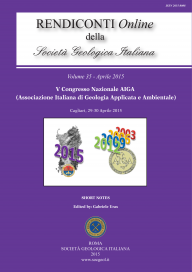
Seismic Permanent Ground Deformations: Analysis of soil liquefaction occurred after the 2012 Emilia Earthquake
Giovanni Forte (a,b) & Filippo Santucci de Magistris (a)
(a) Structural and Geotechnic Dynamics Lab. StreGa, Di.Bi.T. Department, Università del Molise, Campobasso. E-mail: giovanni.forte@unimol.it; filippo.santucci@unimol.it
(b) DICEA Department, Università degli Studi di Napoli Federico II. E-mail: giovanni.forte@unina.it
Volume: 35/2015
Pages: 140-143
Abstract
The 2012 Emilia earthquake showed that moderate earthquakes could trigger seismic permanent ground deformations. In particular, this paper deals with the analysis of the occurrence of soil liquefaction in Emilia Region (Northern Italy) after the 2012 earthquake. This phenomenon was considered not common in a country such as Italy.
Soil liquefaction was analyzed as reference to the case study of Sant'Agostino municipality (FE), which was one of the most affected areas. Simplified liquefaction verifications were performed in 63 sites, characterized by liquefaction occurrence and the presence of a CPT in a radius of 50 m. Low liquefaction potential appears from computation is spite of the evidences of the phenomenon.
Furthermore, the distribution of the sites in which soil liquefaction was observed was compared with the PGA distribution at surface from the Shakemaps by INGV. It showed a PGA triggering threshold below 0.1 g, which is the lower boundary proposed by the Italian Building Code (NTC 2008), to consider this phenomenon negligible.
Keywords
Get Full Text